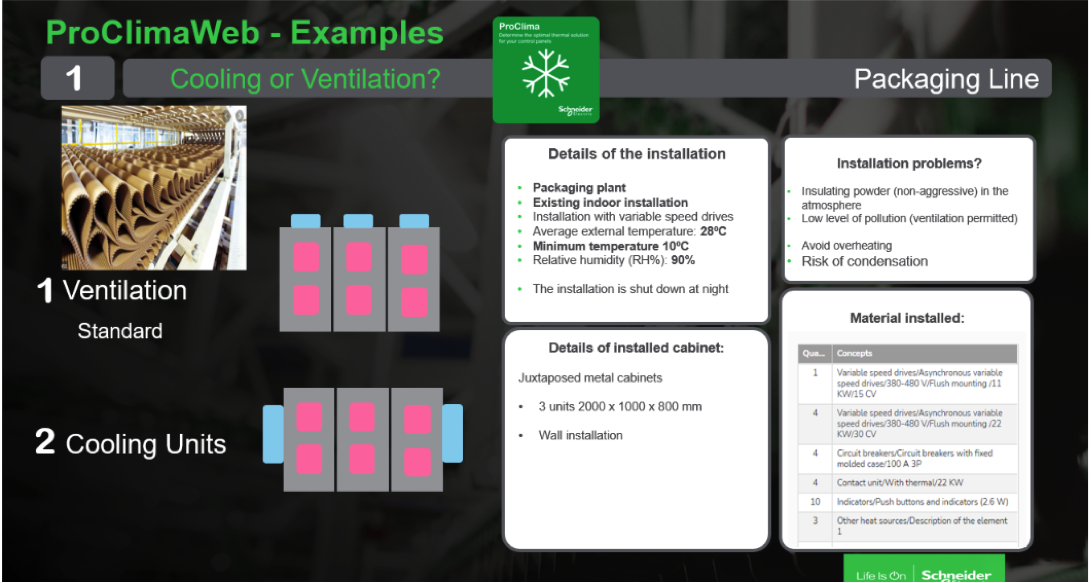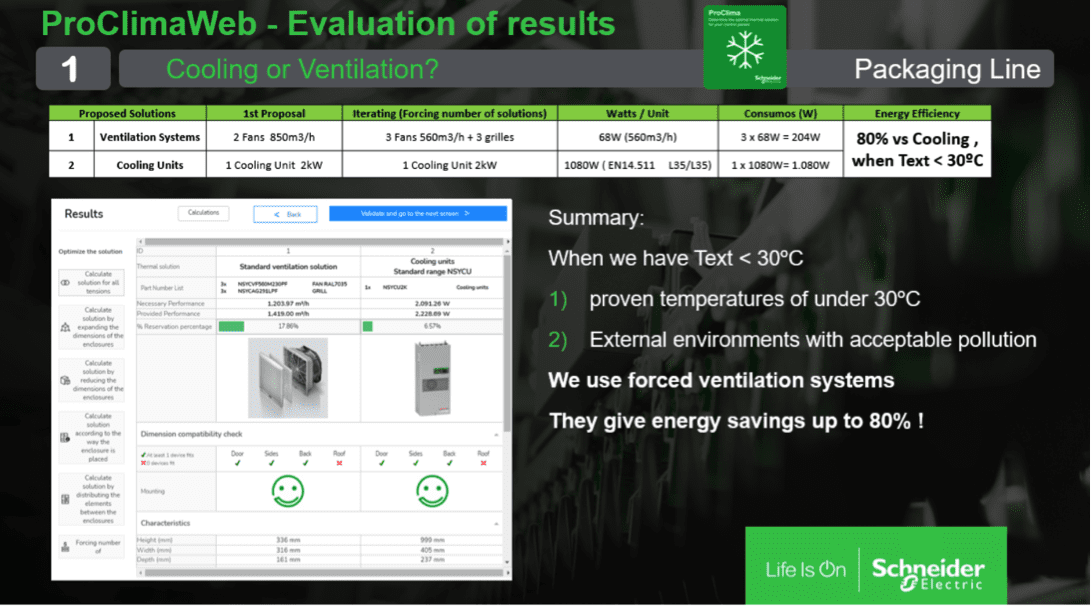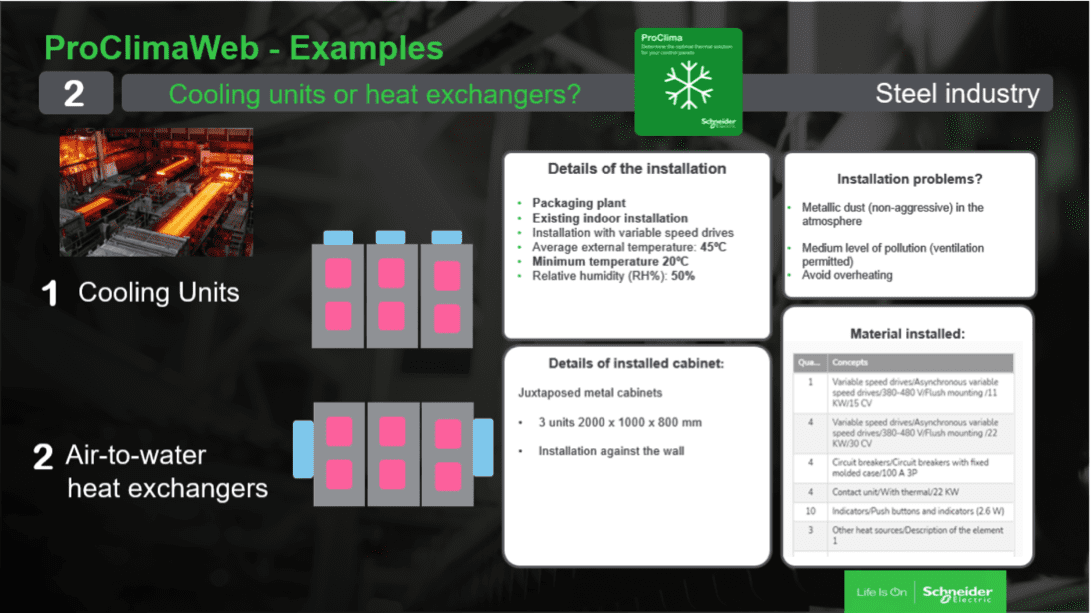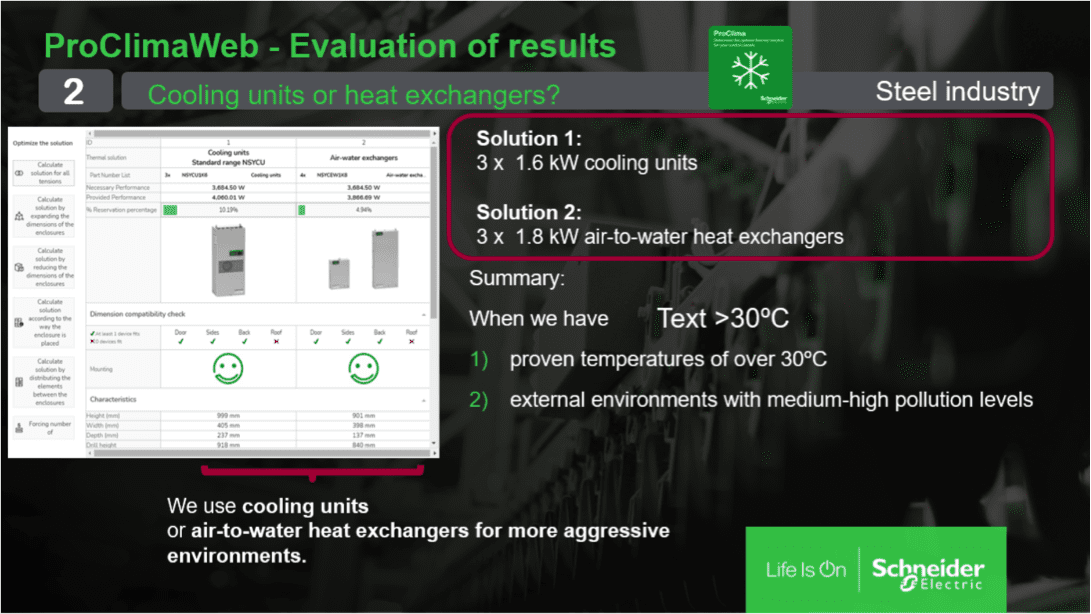Thirty years or more ago, many manufacturing facilities and industrial process plants were not air-conditioned, and many had roofs that were not very well insulated. The dangerous threat of heat damage was very real, with interior temperatures reaching up to 40ºC, making working conditions extremely unsafe and challenging.
Thanks to the advocacy of global trade unions, many of today’s more modern facilities now incorporate improved ventilation and stabilize temperatures via air conditioning equipment and air filtration in manufacturing and storage areas. These improvements, combined with well-insulated roofs to minimize the effect of direct solar radiation, enable interior temperatures of 25ºC year-round, with impressive savings in energy consumption.
In fact, the design of industrial facilities has improved to the point that natural ventilation alone can be sufficient to maintain satisfactory operating conditions for automation and control panels. For example, with the outside temperature stable at 25ºC and an adequate air-filtration system, forced ventilation can be the best cooling option. This solution allows fresh air from outside without any risk of aggressive corrosion of the installed electrical and electronic equipment.
However, determining whether forced ventilation or air conditioning is the better choice isn’t always as easy under real-world operating conditions. Fortunately, thermal calculation software, like ProClima Web, can help with this decision, as the following two examples illustrate.
First example: External temperature < 30ºC – Packaging industry
This installation involves a packaging line with a set of 3 steel cabinets measuring 2000 x 1000 x 800mm and with different installed materials:

Using thermal calculation software allows us to enter the initial conditions and create all possible scenarios.
- Dimensions
- Cabinet material
- Desired installation position
- Outside temperature
- Desired internal temperature
- List of installed material with its corresponding calories (Watts) that will dissipate
In Figure 2, the example installation with temperatures equal to or below 30ºC allows the use of air conditioners and ventilation. In this typical situation, the final energy-use difference between cooling & ventilation is clear – 80% energy savings using ventilation. With ProClimaWeb’s optimization menu, we can split the number of fans according to the number of enclosures (by forcing the number of fans). In this example, we can change from 2 to 3 fans and see additional possible energy savings.
A vast difference in energy consumption is obtained by comparing these conditions to 3 fans and 1 climate control:

Second Example: External temperature > 30ºC – Steel Industry

Figure 3 illustrates the opposite conditions, with a steel factory facing an outside temperature of 45ºC. In this facility’s technical room, for example, ventilation will not be sufficient for the simple reason that this approach cannot achieve the delta T necessary to maintain optimal operating conditions. (Delta T = Desired Temperature – External Temperature, which in this case = 35ºC – 45ºC = -10ºC). As a result, we must inject energy into the system to extract the calories. Here, the air conditioner comes into action, allowing us to cool the inside of the cabinet to 35ºC with external temperatures well above 30ºC.
The energy consumption, in this case, is justified considering the extreme working conditions of the installation.
To address even more aggressive environmental conditions, air-water exchangers could be used as a cooling solution, as proposed in this Figure 4 scenario.

Get started with thermal management
These two examples – using the same architecture and equipment but with different external environments and temperature conditions – illustrate that finding the right thermal solution depends on a detailed evaluation of all operating variables. That is why thermal management software is valuable for analyzing the external environment (e.g., temperature and air quality) in the design and operation phases with diagnostic tools.
Watch this video to see ProClima Web in action and register for free access, or download our Thermal Control Panel Technical Guide.



Conversation
Good blog!
Good and understandable!
Highly understanable